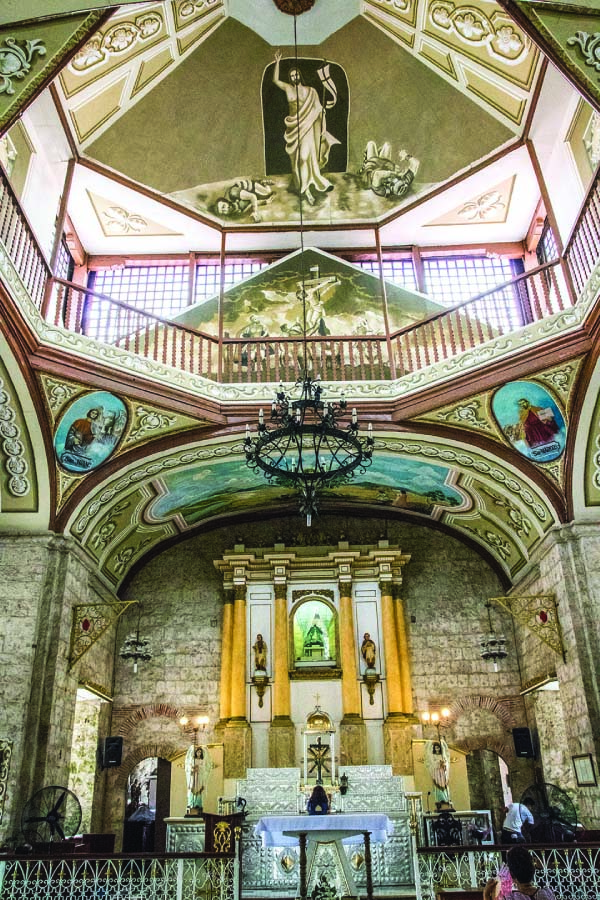
Devotees of the Lady of Caysasay, also recognized as the Chinese goddess Ma Cho, have built shrines to house her image.
In Batangas City, on the grounds of Chinese school Kip Si, a temple was built complete with traditional Chinese dragons, arches and carved stone pillars. It is home to a replica of the original Ma Cho, found washed up on the banks of the Pansipit River in 1603.
The original wooden image is permanently housed in a modest Caysasay Shrine. Built in 1639 on the riverbanks in Labac, Taal. It is of light materials, including coral stone. The shrine has since been repaired and renovated many times, but the original architecture and structure are relatively intact.
Its interior has four rectangular columns that form three arches. The ceiling on the magnificent dome is painted with almost black and white Biblical images. A huge painting, a rendition of the fisherman Juan Maningcad with his net and the statue, is prominently displayed on the walls. Light from windows around the dome illuminates the main altar below, which is the centerpiece of the chapel’s interior.
The image of Our Lady of Caysasay is displayed in the uppermost part of the altar. It is accessible through stairs at the back of the church for devotees to seek blessings, guidance and express their intentions.
After the mass, a long line of devotees line up the stairs leading to the altar. The image of Our Lady of Caysasay can be touched by devotees through the grills.
In San Fernando, the temple built to honor the Ma Cho image gifted by Taiwanese fishermen rests on a hilltop facing the sea, a fitting home for the goddess of the sea.
It took two years to build. By the time it was completed in 1978, it was a testament to a major and successful collaboration between the temple and the then Philippine Ministry of Tourism.
Its unique architecture featured a massive arch in front, an entrance arch at the highway, and camphor-wood carvings inside. It boasted the first spider-type dome in the country and stone carvings all around.
The unique dome and wood came from Taiwan, the concrete pillars and stones from China.
The trustees I talked with joked that even before talks of reunification of the two Chinas, their Temple managed to unite efforts with Taiwan and China Ma Cho Temples. Both temples are hosts to pilgrimages of the faithful, Chinese and Filipino alike.
Indeed, faith can move mountains and unite peoples of different backgrounds and nationalities.
